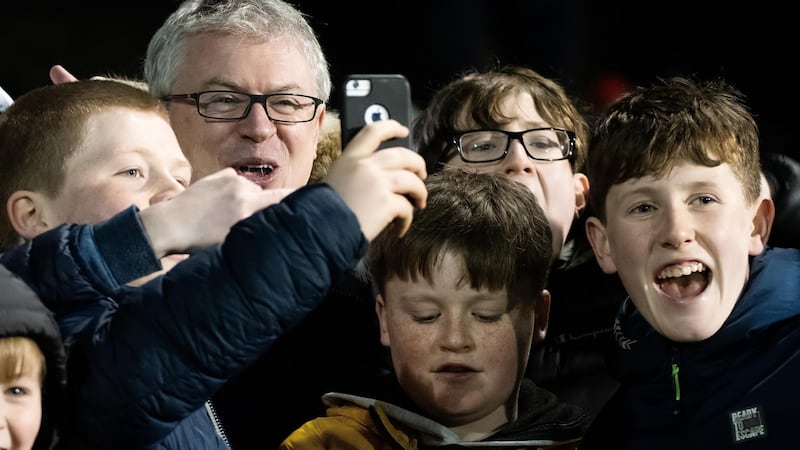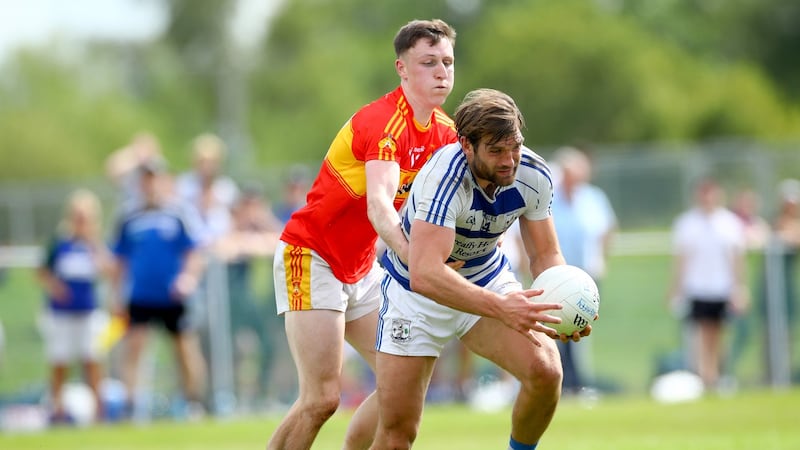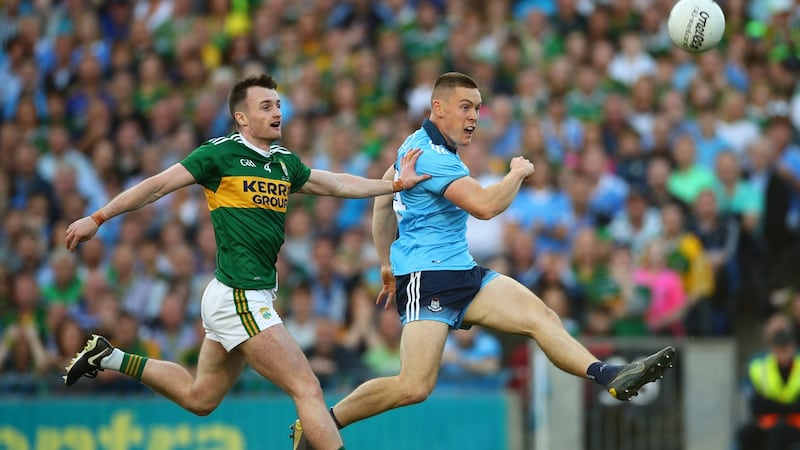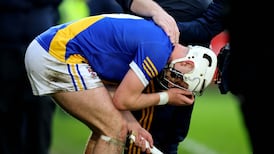In the early days of Ireland's lockdown, when being told to stay home felt like a novelty and was accompanied by an unexpected burst of Mediterranean weather, the Cork writer and satirist Colm Tobin noted on Twitter: "I have to say, I didn't expect the apocalypse to involve quite so much DIY."
The pandemic has forced all sorts of questions about how everyone works and lives. The GAA, perhaps the last pillar still standing, has arguably undergone the biggest change of all.
For as Ireland’s sports fans anxiously await the uncertain beginning of the 2020 All-Ireland championships, the pandemic has brought to a head one of the oldest fundamental questions: What is the GAA for?
It already seems like a lifetime ago since GAA pundit Joe Brolly was unceremoniously axed as RTÉ's agent provocateur, a role in which he had flourished for almost two decades. Irreverence was the Derry man's calling card. He was unpredictable and occasionally over the top and he continuously used his soap box to cry foul when he believed the GAA to be going down a dangerous road – which was often.
He bemoaned what he perceived to be the joylessness of playing intercounty football. He carried the flag for the cause of the club players, who have played second fiddle to the intercounty All-Irelands. He was death on the increasingly corporate profile of the GAA. When Sky television entered the game and began to bid for the rights to broadcast the All-Ireland championship, he initiated a passionate and persuasive argument about why the GAA was wrong; why they were selling out.
Inevitably, he got it in the neck in January when he signed up to work as a pundit for Eir, another commercial sports package broadcaster. “Increasingly I was feeling I was howling into the wilderness,” Brolly said then of his decision.
“Its clear there is gonna be a whole new landscape and it is happening so quickly.”

His words were prescient, if not for the right reasons. Brolly made his debut on a freezing night in Ballybofey, wrapped up in a parka and looking to all the world like one of Shackleton’s travelling party. Not long after that, Sport stopped.
Had you told Brolly and his colleagues on that evening that before the year was out, the All-Ireland football championship final would be fixed for Saturday, December 19th; that there was a distinct danger that neither the football nor hurling championship would be played at all and that there was broad agreement that a year split cleanly between club and championship, with the intercounty season running from January to July, they couldn’t have comprehended it.
Striking a balance between the scale of the club season and the profile and demands of the intercounty league and All-Ireland has been a task that has vexed the best and brightest within the GAA for years. But the sudden suspension of Gaelic games gave an unexpected and unwanted answer to a question that had been muttered through the generations. Everyone gives out about the GAA but what would life be like without it? Duller, turned out to be the answer.
Club gates were locked and bolted. Morale-boosting skills sessions and challenges did the rounds on social media but that novelty soon wore out. A deluge of old games were broadcast on the television channels but couldn’t compensate for the real live thing. The absence ran deep. The GAA responded by swiftly redrafting an emergency schedule, with the club championships first up and the summer All-Irelands now re-fixed for the depths of winter.
That response has given an unexpected boost to the club game. For once, it has the big stage to itself in the height of summer. It is literally the only show in town. There has never been a bigger appetite for club championship games among a national audience starved of live competition. Attendance has obviously been limited by Covid restrictions but television and streaming figures have been hugely encouraging.
The club is acknowledged as the bedrock of the GAA and its social values have been harnessed by slick advertising campaigns lauding the virtues of perseverance and togetherness and triumph over hardship. The pandemic season seems to have strengthened the idea that while the intercounty championship is wonderful, it is a luxury: that the club is where it is at. The mood was caught by Ken Hogan, the former All-Ireland winning Tipperary goalkeeper, who this week told RTÉ's Damian Lawlor that the idea of a split season is "a no-brainer".

“This has been a breath of fresh air, the club season. Every parish in Ireland is alive and vibrant. I was over in my own club in Lorrha and to see Bonnar [Maher, the Tipperary hurler] and the lads there all involved in the training . . . the fulcrum of the whole association is the GAA pitch.”
The proposal for a clean calendar split between club and county was originally mooted by the Club Players’ Association. Now, it has been enthusiastically endorsed by the Gaelic Players’ Association, the body representing intercounty players and by the GAA.
At Wednesday evening's national fixtures taskforce meeting, all parties re-affirmed their broad commitment to the introduction of a split season. The GAA president John Horan has already stated his belief that it would be "too risky" to try and introduce such a sweeping, new structure before the 2022 season. Nonetheless, there is likely to be growing calls to push ahead with the reform in time for next season.
It's a huge shift in attitude and vision from within the GAA. Just last month, in early July, CPA chairman Micheál Briody told RTÉ's Joanne Cantwell that his organisation had asked for clarification about the club/county fixtures issue but had yet to receive it. He sounded faintly resigned then as he warned that returning to the old model of organising games could not work as "the dropout rate is way too big across the association.
“2020 will be the catalyst for change overall,” he predicted.
“Because the club season is coming before the intercounty, it is highlighting the issue. It is highlighting the lack of governance.”

It is as though everyone has fallen into line with that view point over the subsequent five weeks. And it brings about its own questions. There was considerable unease when the GAA revised its All-Ireland schedule to effectively finish the championships by the end of August. It meant that the GAA was voluntarily ceding what had been its sacred and prestige month: September. From a cold commercial point of view, that seemed like a huge risk. Why would an organisation competing for public and media attention readily cede the stage to opposition – and professional – sporting organisations behind soccer and rugby?
Back when the intercounty league season was split either side of Christmas, the GAA’s prestige competition was always in the mind’s eye and in the headlines. Even when the leagues were compressed to begin in late January, the intercounty games enjoyed eight to nine months of unbroken coverage and profile and attendance. But the proposed split further shrinks the national profile of the GAA’s premier competition. Leaving a full six-month gap without any intercounty games is a brave call. It means compressing the elite intercounty season, which commands a strong national interest, to give a fair platform to the club games, which enjoys an intense but localised audience.
The split season initiative may inadvertently also serve to dilute the sense that the intercounty scene was steaming unavoidably towards some sort of concession towards professionalism. A shorter and cleanly defined intercounty season will give both managers and players a clearer framework in which to work – and to then do other things with their lives, including giving a full and uncompromised commitment to the club.
Because the other inadvertent effect of the pandemic has been to clarify what the GAA means to people. The appeal isn’t really about the promise of winning one of the two big All-Ireland trophies. If it was, its influence would have disappeared decades ago as only the same few counties turn up year after year.
There's a strong argument to be made that the old intercounty and provincial model has become so unfair that it is almost broken. Still, the public loves it. This week's revised Government protocols on the playing of sport suddenly left the idea of winter All-Ireland championships even more fragile. Within the GAA, there is an increasing feeling that playing the games, irrespective of limited or non-existent crowds, has become vital; that it is, as former president Nickey Brennan put it, important "for the health and wellbeing of the country, who look forward to seeing the matches".
That sense of responsibility for the collective wellbeing of its members – and casual supporters – may have contributed to the hastily worded response by the GAA to the Government advice this week. The invitation to Dr Ronan Glynn, acting chief medical officer, to come in and present the "empirical evidence" behind the decision did not translate well. But it also reflected the frustration given that the organisation has been proactive and conscientious in its response to playing games through the pandemic.
The coming weeks will see the GAA come into a sharper focus, with county finals pitting big local rivalries and stars against one another. Once they are completed, the return date for the intercounty scene will loom large. Economic and social challenges are so manifold and grave at the moment that it will be impossible for the championship to hold the same grip on the imagination as it did during normal years of relative sanguinity and prosperity. That may not be a bad thing. Simply completing the championship and providing a welcome distraction for people is enough.
For there was some truth in the thread of worry that ran through Joe Brolly’s various outbursts and polemics: that the whole scene had slightly lost the run of itself; that the old comparison to professionalism had become a self-fulfilling prophecy. Whereas in truth, the All-Ireland championships are much lighter and far more important than that.













